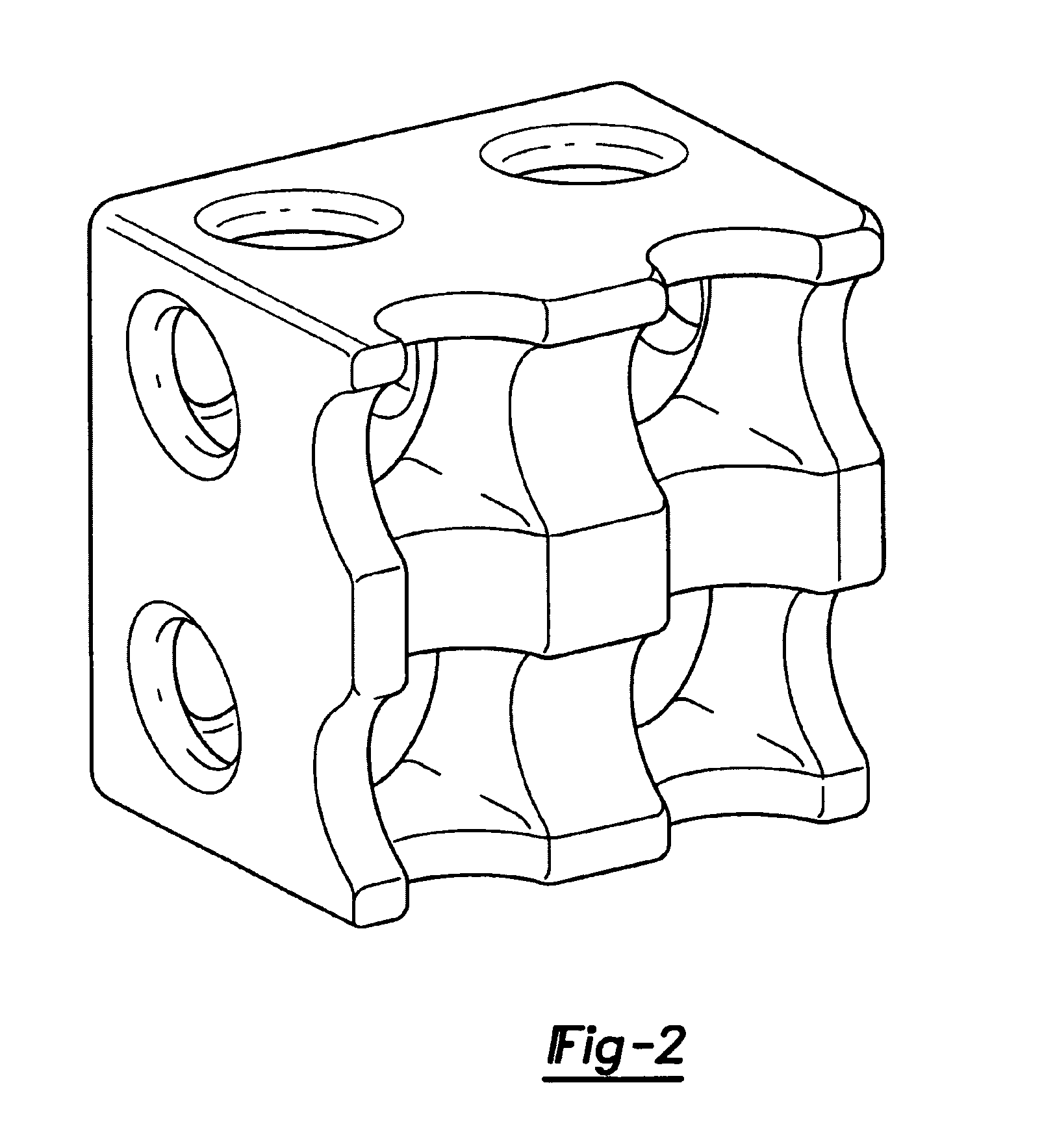Design methodology for tissue engineering scaffolds and biomaterial implants
a tissue engineering and biomaterial technology, applied in the field of biomaterial scaffolds, can solve the problems of increasing reducing mechanical stiffness and strength, and presenting conflicting design requirements for the first two functions, and achieve optimal pore geometry and compute effective physical properties based on material microstructure.
- Summary
- Abstract
- Description
- Claims
- Application Information
AI Technical Summary
Problems solved by technology
Method used
Image
Examples
Embodiment Construction
[0019]The following description of the preferred embodiment is merely exemplary in nature and is in no way intended to limit the invention, its application, or uses.
[0020]The present invention is generally directed towards a method approach for designing tissue engineering scaffolds, biomaterial implants, drug delivery systems, gene delivery systems and in vitro tissue testing systems that can be heterogeneously distributed to match any anatomic shape and can be fabricated using solid free form fabrication techniques. This invention incorporates image-based design techniques, homogenization theory, mathematical optimization algorithms, marching cubes and marching squares algorithms to convert image based design data to surface or wire frame geometry, and solid free form fabrication.
[0021]The steps for performing the scaffold optimization of the present invention are shown in FIG. 1. In step 1, the methodology creates unit cell voxel databases. That is, a set of base unit cell archit...
PUM
| Property | Measurement | Unit |
|---|---|---|
| diameter | aaaaa | aaaaa |
| porosity | aaaaa | aaaaa |
| Young's modulus | aaaaa | aaaaa |
Abstract
Description
Claims
Application Information
 Login to View More
Login to View More - R&D
- Intellectual Property
- Life Sciences
- Materials
- Tech Scout
- Unparalleled Data Quality
- Higher Quality Content
- 60% Fewer Hallucinations
Browse by: Latest US Patents, China's latest patents, Technical Efficacy Thesaurus, Application Domain, Technology Topic, Popular Technical Reports.
© 2025 PatSnap. All rights reserved.Legal|Privacy policy|Modern Slavery Act Transparency Statement|Sitemap|About US| Contact US: help@patsnap.com



